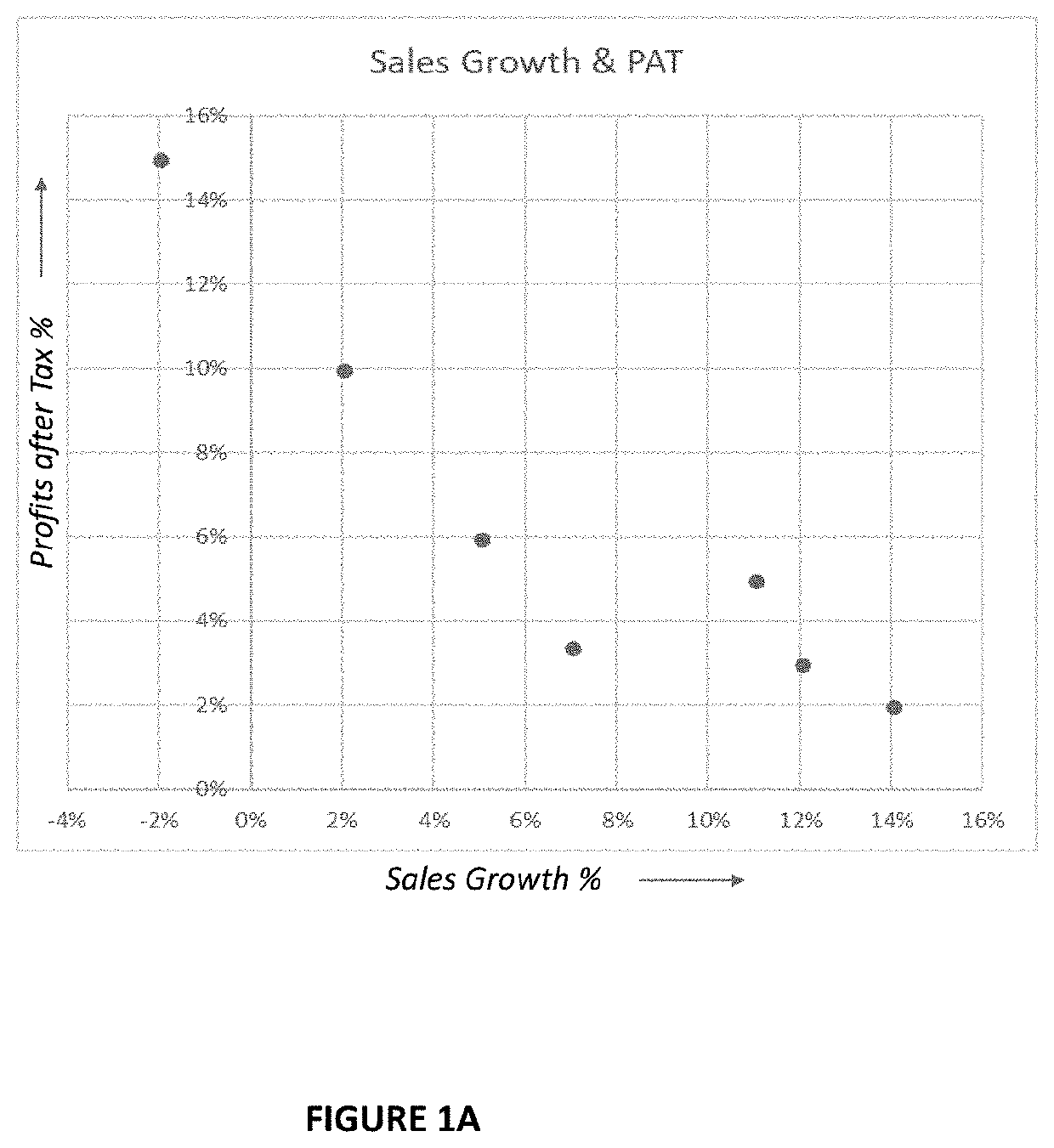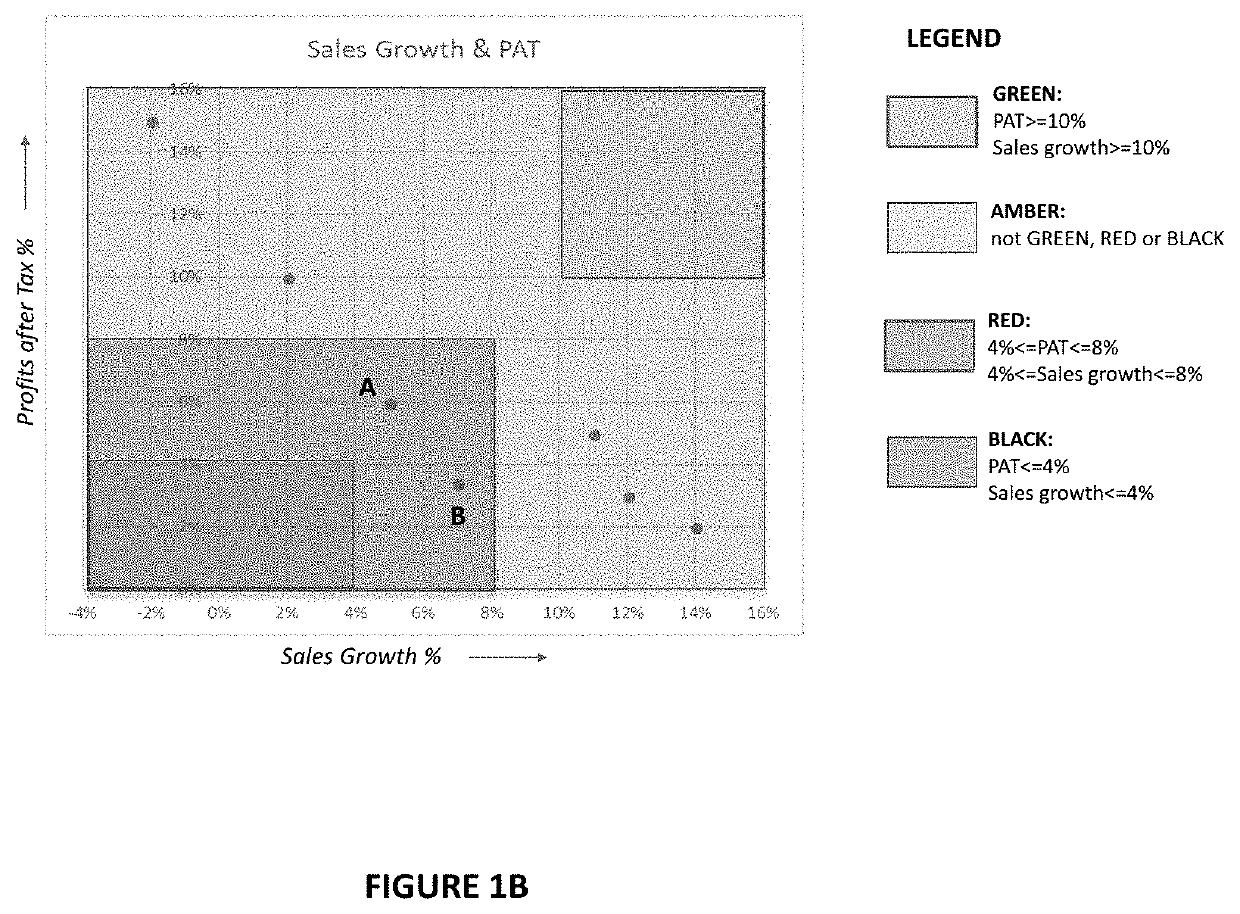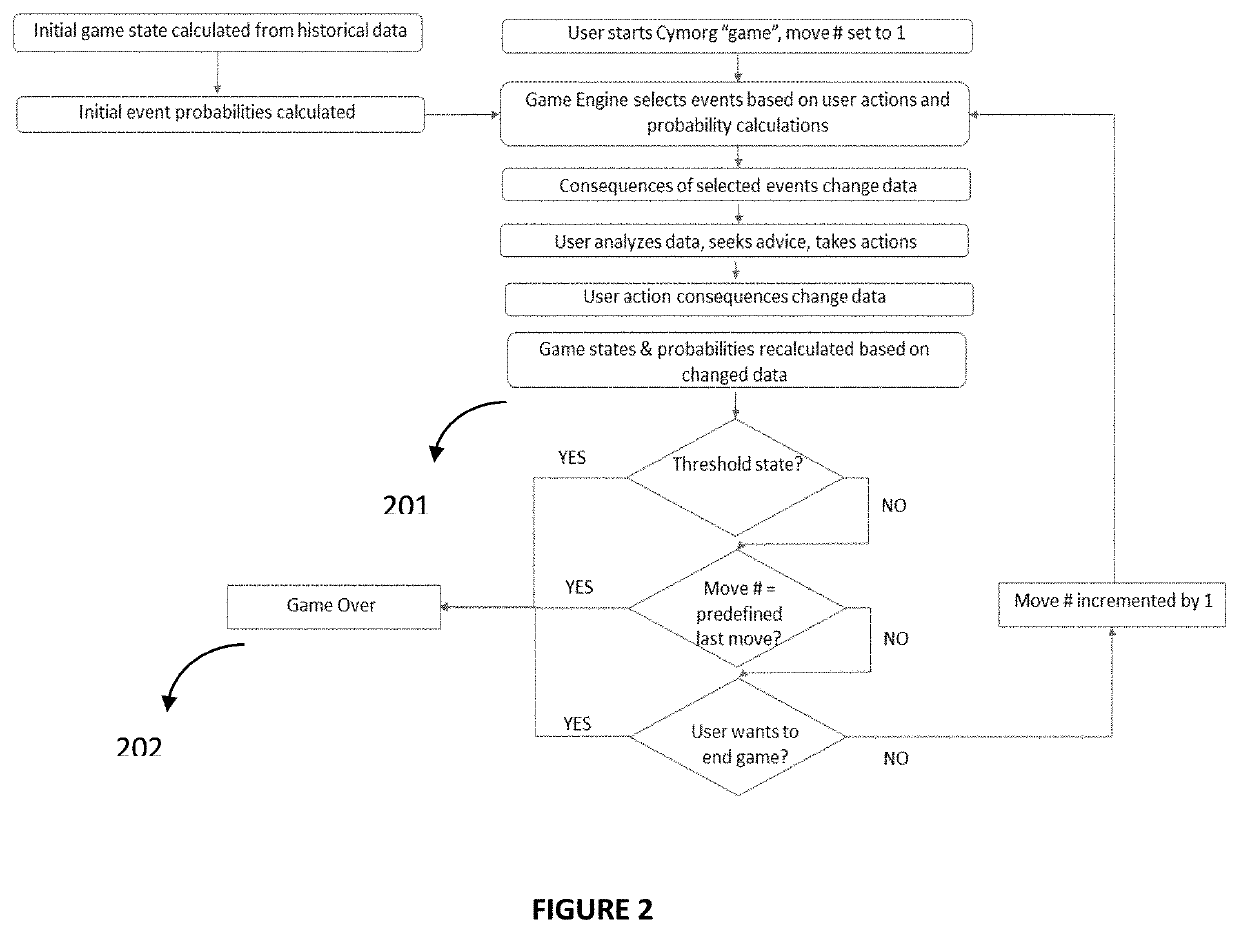Method and system for scenario selection and measurement of user attributes and decision making in a dynamic and contextual gamified simulation
a dynamic and contextual gamification simulation and scenario selection technology, applied in the field of education and training, can solve the problems of difficult assessment of aspects using simple multiple-choice or likert type (continuous scale) response formats, and the difficulty of measuring these aspects, and achieves the effects of high degree of realism, easy modification, and easy design or “author”
- Summary
- Abstract
- Description
- Claims
- Application Information
AI Technical Summary
Benefits of technology
Problems solved by technology
Method used
Image
Examples
case 1
[0149, depicted in FIG. 3A. FIG. 3A shows which events were picked up. The 4 high probability events are 97-100, and the first 60 events are the low probability ones. Over 60 moves, a total of 181 events were picked up. Of these, 46% were high probability events, only 6% were low probability events (despite only 4% of all available events being high probability, and 60% of all available events being low probability).
case 2
[0150, depicted in FIG. 3B. For the same example: A different distribution: where N (hi)=15, N (med)=42, N (low)=43. Because there are 15 high probability events, and only 3 are getting picked at any time, chances are that almost always only high probability events will get picked.
Here Plo=3 / 1636=0.0018
[0151]Pmed=0.0165
[0152]Phi=0.1485
[0153]These are the results of the simulation:
[0154]Maximum events per move=6
[0155]Average events per move=2.82
[0156]When we ran the Cymorg event picking engine, the results were as depicted in FIG. 3B. The 15 probable ones feature prominently. Each high probability event occurs at least 6 times), and in total, high probability events account for nearly 80% of all events picked. The moderate ones do get a look in now and then (none more than twice), and once in a blue moon, we see a few very unlikely events take place as well. There's something in it for everyone.
case 3
[0157]Consider Case 3, depicted in FIG. 3C. For our last example, depicted in FIG. 3C, we will choose a distribution with 1 high-probability event, 70 medium-probability events and 29 low-probability events. The one high probability event took place 22 times (way more often than any other event, but only 11% of all events that got picked up). Because 70% of all events were mid-probability events, most of the events that took place were mid probability events (accounting for 83% of all events), while the low probability events, though 29% of the total available events, only occurred 6% of the time.
[0158]The method under discussion involves assigning event probabilities in 3 (or 4, or 5, or any small number of) discrete levels only, where each probability level is a multiplicative factor more likely to occur than the next rarer level, and to adjust the expected value for the number of events likely to take place to a pre-set average number, by applying an adjustment factor on the prob...
PUM
 Login to View More
Login to View More Abstract
Description
Claims
Application Information
 Login to View More
Login to View More - R&D
- Intellectual Property
- Life Sciences
- Materials
- Tech Scout
- Unparalleled Data Quality
- Higher Quality Content
- 60% Fewer Hallucinations
Browse by: Latest US Patents, China's latest patents, Technical Efficacy Thesaurus, Application Domain, Technology Topic, Popular Technical Reports.
© 2025 PatSnap. All rights reserved.Legal|Privacy policy|Modern Slavery Act Transparency Statement|Sitemap|About US| Contact US: help@patsnap.com



